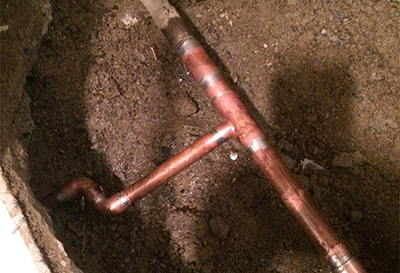Just how to Examine If Your House Has a Concealed Leak
Just how to Examine If Your House Has a Concealed Leak
Blog Article
Nearly everybody has their unique thoughts with regards to Detecting hidden plumbing leaks.

The minute you locate a leakage, calling your plumber for fixings is the very best remedy. Nonetheless, some small water leaks might not be visible. Right here are some hacks that aid if you can not find it with your naked eyes.
Early discovery of dripping water lines can reduce a potential calamity. Besides conserving you cash, it will decrease the aggravation as well as aggravation.
Check Water Usage
If you spot abrupt adjustments, despite your intake being the exact same, it indicates that you have leakages in your plumbing system. An unexpected spike in your expense indicates a fast-moving leak.
Meanwhile, a stable rise every month, even with the same behaviors, reveals you have a slow-moving leakage that's additionally gradually escalating. Call a plumber to completely examine your home, particularly if you feel a warm location on your floor with piping underneath.
Analyze the circumstance and check
Home owners must make it a habit to inspect under the sink counters and also inside cupboards for any bad odor or mold development. These two warnings indicate a leakage so timely focus is needed. Doing routine examinations, even bi-annually, can conserve you from a major issue.
Check Out the Water Meter
Checking it is a guaranteed method that aids you uncover leaks. If it moves, that suggests a fast-moving leakage. This indicates you might have a slow leak that might also be below ground.
Asses Exterior Lines
Don't forget to inspect your outside water lines also. Examination faucets by attaching a garden hose. Ought to water leak out of the link, you have a loosened rubber gasket. Change this and make sure all links are limited. If you have actually obtained a sprinkler system, it will help get it expertly analyzed as well as preserved every year. One little leakage can throw away lots of water as well as surge your water expense.
Do a Food Coloring Test
When it comes to water intake, 30% originates from bathrooms. Test to see if they are running correctly. Drop flecks of food color in the tank and also wait 10 mins. There's a leak in between the storage tank and dish if the color in some way infiltrates your dish during that time without flushing.
If you understand your home is currently old, keep a careful eye on your heaters, pipes, pipes and so on. Look for discolorations as well as weakening as the majority of home appliances and pipelines have a life span. They will additionally naturally degrade due to deterioration. If you presume dripping water lines in your plumbing system, don't wait on it to rise. Call a specialist plumber immediately so you do not wind up with a terrible mess in your home.
The moment you find a leakage, calling your plumber for repairs is the ideal service. Some little water leaks may not be visible. Inspecting it is a proven way that helps you discover leaks. One small leak can lose bunches of water and spike your water bill.
If you suspect leaking water lines in your plumbing system, don't wait for it to intensify.
WARNING SIGNS OF WATER LEAKAGE BEHIND THE WALL
PERSISTENT MUSTY ODORS
As water slowly drips from a leaky pipe inside the wall, flooring and sheetrock stay damp and develop an odor similar to wet cardboard. It generates a musty smell that can help you find hidden leaks.
MOLD IN UNUSUAL AREAS
Mold usually grows in wet areas like kitchens, baths and laundry rooms. If you spot the stuff on walls or baseboards in other rooms of the house, it’s a good indicator of undetected water leaks.
STAINS THAT GROW
When mold thrives around a leaky pipe, it sometimes takes hold on the inside surface of the affected wall. A growing stain on otherwise clean sheetrock is often your sign of a hidden plumbing problem.
PEELING OR BUBBLING WALLPAPER / PAINT
This clue is easy to miss in rooms that don’t get much use. When you see wallpaper separating along seams or paint bubbling or flaking off the wall, blame sheetrock that stays wet because of an undetected leak.
BUCKLED CEILINGS AND STAINED FLOORS
If ceilings or floors in bathrooms, kitchens or laundry areas develop structural problems, don’t rule out constant damp inside the walls. Wet sheetrock can affect adjacent framing, flooring and ceilings.
https://www.servicemasterbyzaba.com/blog/how-to-detect-water-leakage-in-walls/

As a serious reader about Locating water leaks, I figured sharing that excerpt was really useful. Do you know about another person who is intrigued by the topic? Do not hesitate to promote it. Thank you so much for your time invested reading it.
Report this page